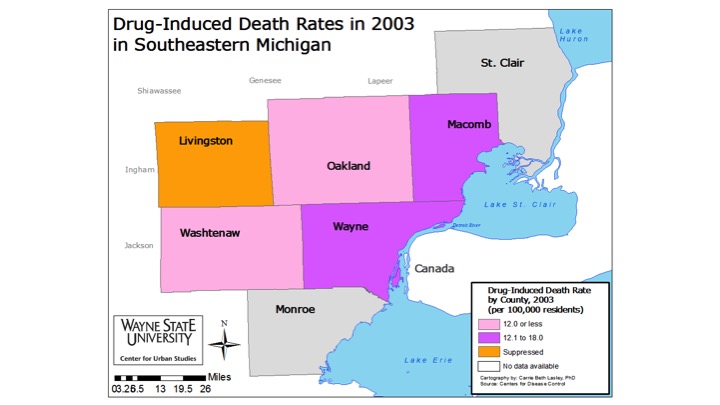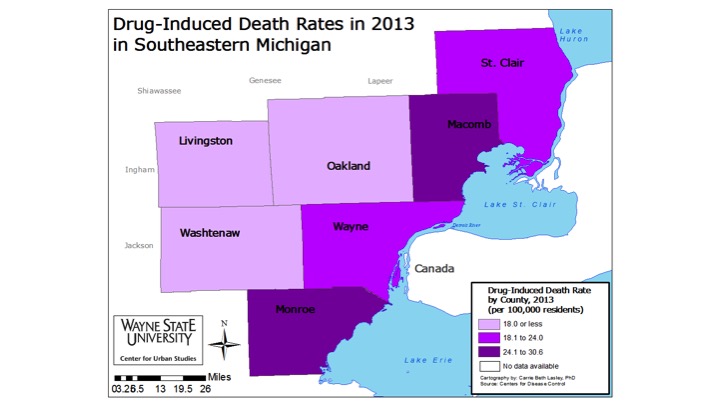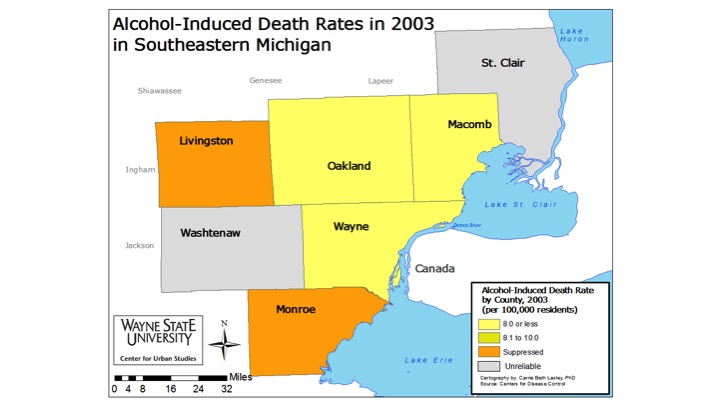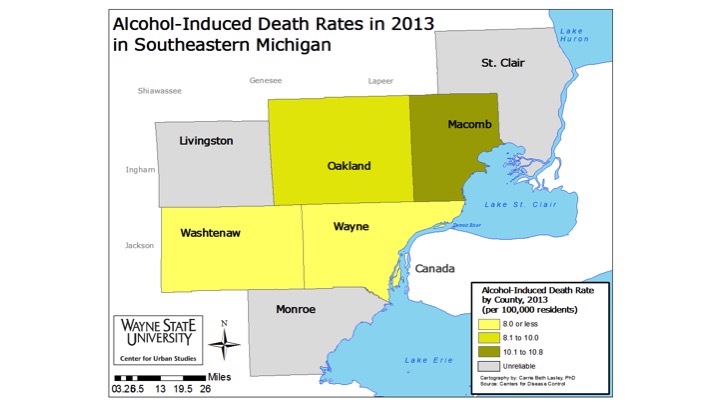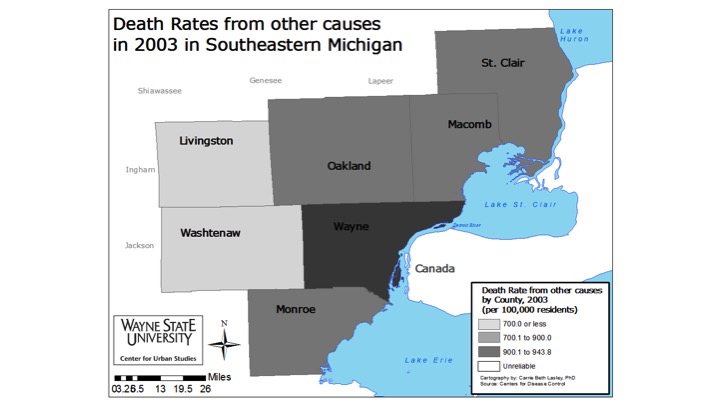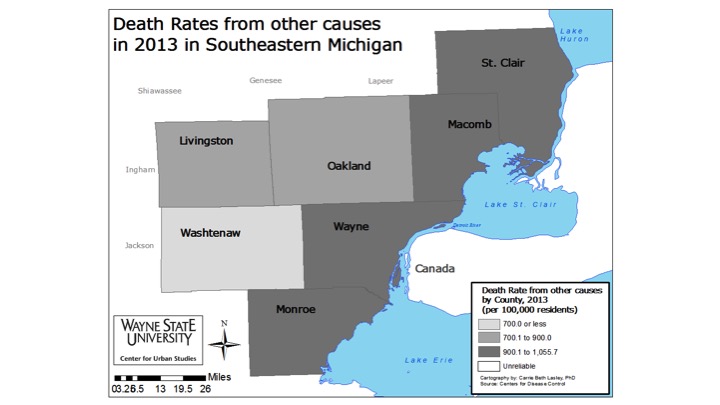As with other regions Southeastern Michigan has rising drug-related death rates, which the Centers for Disease Control (CDC), have attributed to increased use and abuse of opioids. According to the CDC, opioid overdose death is an epidemic that can be found within even the quietest communities. In 2013, on the national scale, drug overdoses were the leading causes of injury death and 51 percent of those deaths were related to prescription drugs. While data at the county level on opioid specific deaths was unavailable, below are maps showing how drug-induced death rates have increased in every Southeastern Michigan county (where data is available) between 2003 and 2013. In addition to an increase in drug-induced death rates since 2003 there has also been an increase in alcohol-induced death rates and “all other causes” of death.
All of the information presented in this presented was obtained from the CDC. According to the CDC, data is unreliable if the number of deaths for a specific cause is too small to create an accurate rate. Additionally, some counties have suppressed rates, meaning the information obtained is below the determined “cut-off” value and the conditions for suppression are met, according to the CDC. Rates are per 100,000 residents.
Macomb County had the highest increase in drug-induced death rates between 2003 and 2013, with the rate climbing 16.2 per 100,000. In 2013 Macomb County had the second highest drug-induced death rate though at 29.2; Monroe County had the highest rate at 30.6. It was Washtenaw County that had the lowest drug-induced death rate in 2013 at 16.1; in 2003 the Washtenaw’s drug-induced death rate was 8.9.
In 2003 Monroe and St. Clair counties had too few drug-induced deaths (18 and 12, respectively) for reliable rates to be created. However, with such low drug-induced death numbers in 2003 for those two counties we can infer that Monroe and St. Clair counties also experienced an increase in their rates between 2003 and 2013, especially since the CDC was able to determine rates for 2013.
According to the CDC, those between the ages of 25 and 54 have the highest rate of opioid overdose deaths. While rates for drug-induced deaths at these age levels were not explicitly available, the data does show that Macomb County had 157 drug-induced deaths for residents between the ages of 25 and 54 in 2013. Monroe County had at least 20 such deaths, however numbers were not available for the 35-44 age group because the numbers were too small to report.
While there were fewer alcohol-induced deaths than drug-induced deaths in both 2003 and 2013 in each county with available data, there was still across-the-board increases between those dates. Of those documented rate increases, Macomb County again had the largest increase between 2003 and 2013 at 3.2. In 2013 Macomb County also had the highest alcohol-induced death rate of the counties in the region; this rate was 10.8.
Livingston, St. Clair and Washtenaw counties had to few of deaths for accurate rates to be presented.
As expected, the death rates for all other death throughout the region were much higher than either and both drug- and alcohol-induced death rates. One trend to note is that “other causes” death rates also increased between 2003 and 2013. St. Clair County had the largest increase at 184.9; its death rate in 2003 was 870.8 and in 2013 it was 1055.7. In 2013 St. Clair County had the highest rate and Washtenaw County had the lowest.
Just a few weeks ago we drilled down on how the death rate for white, middle aged population is increasing, largely in part to suicide and substance abuse. While numbers were unavailable for alcohol- and drug-induced death rates at the county levels for age groups, this post does highlight how deaths related to alcohol and drugs have been increasing over the last 10 years.
